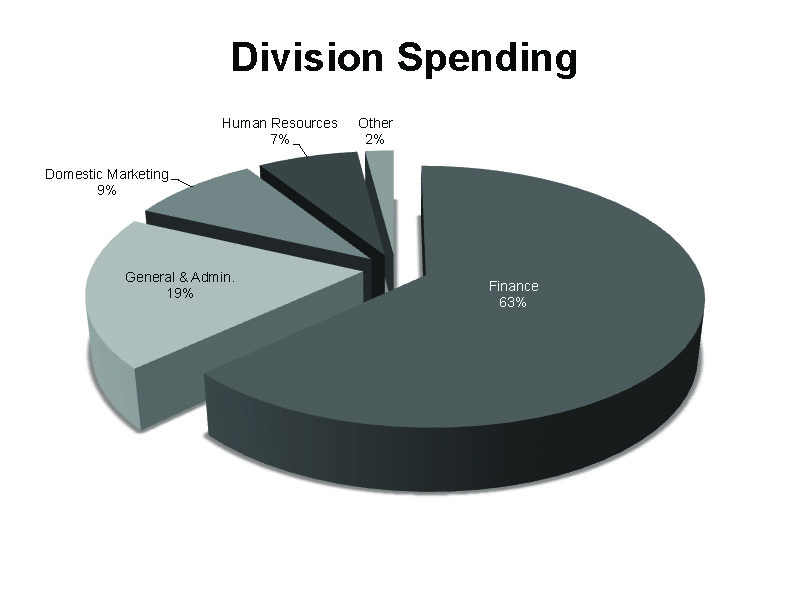
In 2012 corporate philanthropy accounted for 6% (or $18.9 billion) of the total giving in the United States. While corporate giants account for millions in community-relations efforts, the vast majority of the United States is made of up small and mid-sized businesses that generously give but constantly battle with how to get the most out of their dollar. Many small and mid-sized businesses justify community relations efforts as a marketing tool. However, they also can create meaningful and strategic giving plans that emulate those of their major competitors at a fraction of the cost.
A SWEET DEAL
This change in mindset is how Nipro Diagnostics, which manufactures glucose-management systems and other diabetes products, approached its involvement efforts. At the time, Nipro was a classic case of a very generous company that had no clear strategy towards giving and was being pulled in many directions philanthropically.
In short, it was more reactive instead of proactive in its approach. In addition, there was no centralized process or designated contact for community requests, so the impact of giving was being lost.
Based on the company’s giving assumptions, Nipro felt it was not large enough to justify having a full-time individual to manage the community relations department.
Since cost was a factor, hiring a consultant for 20 hours a month allowed Nipro to save on salary and benefits.
Most important, the consultant was able to free up the valuable time of senior executives who had been managing community relations efforts. To help put structure in place, Nipro had three objectives it wanted to achieve:
• Obtain a comprehensive analysis of its past and current giving status.
• Create a strategic community relations plan that aligns its giving with the company’s business goals, objectives and values.
• Put systems in place to help manage and implement the day-to-day initiatives created in the plan.

BUILD A PLAN
To execute the objectives, a budget of $18,000 per year ($1,500 a month) was established, in addition to any out-of-pocket expenses.
During a one-year time frame, the goal would be to build a strategic philanthropic plan that aligned the company’s giving with its business goals and objectives; this would allow for greater buy-in for community involvement efforts.
To build the plan, three key elements were needed: assessment, planning and execution.
Assessment is such a critical part in the planning process, as it helps companies understand where their donations have gone in the past and creates a baseline.
The first step is to work with the accounting department and dive into the details. If the company has given in the past, the accounting department should be able to pull reports that include the following:
• The year of giving.
• The names of the organizations that received gifts.
• The amount of cash donated/amount of in-kind products donated.
• The coding of the donation as a charity or professional membership/association (e.g. 501(c)(3) or 501(c)(6)).
Once the benchmarks are established, the second phase is creating a senior executive task force that will help build the community relations strategy.
The CEO of Nipro identified six key executives to be a part of the process; it included the heads of major departments that were knowledgeable about the direction the company was heading.
The task force’s goals were to:
• Create a mission for their corporate giving program.
• Solidify key focus giving areas.
• Establish giving guidelines.
• Organize a nonprofit organization (NPO) application process.
• Develop measurement assessments.
Each step in the process was flushed out and agreed upon by the entire task force. This step was extremely crucial for the buy-in from the company’s top leadership.
A plan without execution is no plan at all, so it is important to make sure that a company has an individual or systems in place that can make sure the plan is implemented.
The company needs to re-evaluate itself continually and make sure it is meeting the goals and objectives established in the plan.
In Nipro’s case, it kept the consultant on board as a point of contact for all community-relations efforts. Nipro decided that the consultant would have the following responsibilities:
• Serve as the point of contact for all charity requests/ partnerships and volunteer opportunities.
• Oversee due diligence on charity partnerships as well as tracking the impact of donations.
• Manage employee engagement initiatives.
• Mobilize volunteer efforts.
• Establish employee recognition programs.
The new community relations program allowed the company to uncover a lot of the good it was doing but not necessarily aware of. While the initial assumption was that it gave $50,000 to $75,000 on a yearly basis, in 2012 alone it donated $270,000 in cash and in-kind products to charities around the world.
Of the company’s total giving, it partnered with and funded 40 individual charities. About 75% of the total went towards helping the medically ill.
In addition, the findings showed that while the industry standard is for companies to donate 1% cash of their pretax profits to charitable groups, Nipro in fact donated 3% of its pretax profits in 2012. Other outcomes included the establishment of four key funding priorities to help focus Nipro’s future giving efforts.
Also, due to the number of requests Nipro receives, giving guidelines were created as a way to assist organizations and employees in understanding the company’s charitable priorities.
These guidelines serve as an objective way the company can ward off unwanted requests but also attract appeals the company does want to receive.
Based on the importance of the funding priorities, a budget analysis was created to assist with sponsorship decisions and to stay within budget.
Nipro also created recommendations for measurements of success based on the company’s funding priorities. It also created a draft 2014 budget aligning nonprofits that best meet the company’s business goals and objectives.
Finally, Nipro established recommendations for internal and external processes for future sponsorship requests.
This included recommendations for developing a tracking system to manage all employee involvement efforts, creating accountability of employee involvements, and designing an external/internal application process for groups and/or employees soliciting requests.
COMMUNITY RELATIONS
Although the initial objectives of the project were achieved, the next steps are to roll out the new process to the employees and charity partners (which was executed in January).
Leading up to the kick-off, the task force team and consultant will work to test several systems it is trying to implement.
In addition, the team will work with the marketing and HR departments to devise an internal campaign for the employees to excite them about the good works the company will be doing and engage them in the process.
5 PR Tips for a Strategic Philanthropic Plan

1. Solidify a company’s giving areas. These are the two to four overarching charitable areas that a company wants to support (e.g., arts and culture, education, health and human services, leadership development, etc.).
2. Establish giving guidelines. Determining the parameters that will guide a company in their corporate giving efforts.
3. Create processes. It is important to flush out what the nonprofit application process will look like as well as determine who will oversee certain initiatives.
4. Align the company with key organizations that meet their focus giving areas. This allows a company to determine what programs, volunteer initiatives, boards and events it wants to align with.
5. Establish measurements based upon the goals and objectives. —K.A.V.
(This article is an excerpt from PR News’ Top Case Studies in PR, Volume 6. The article was written by Kelly Alvarez Vitale, president and founder of Strategic Philanthropy. For a copy of the guidebook, please go to go to www.prnews- online.com/pr-press.)
CONTACT:
Kelly Alvarez Vitale, [email protected].
This article originally appeared in the May 5, 2014 issue of PR News. Read more subscriber-only content by becoming a PR News subscriber today.
